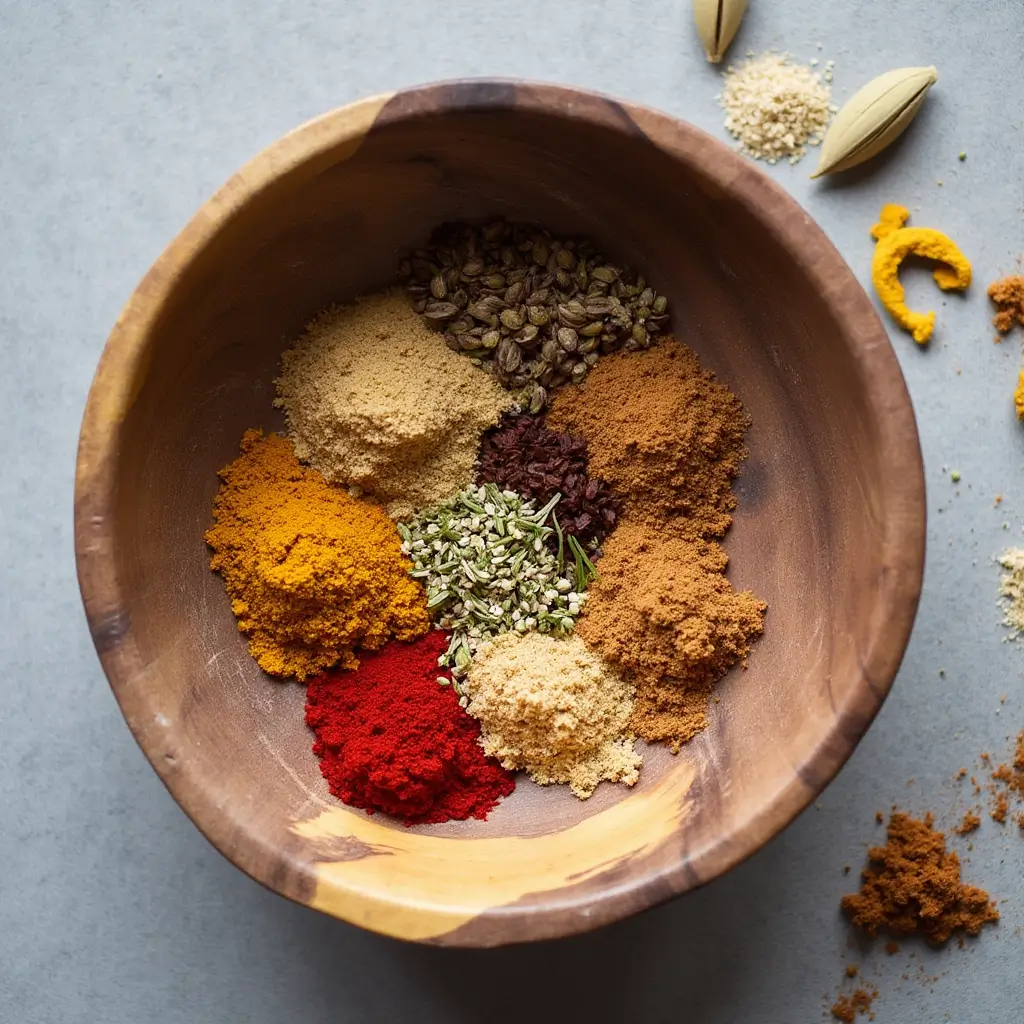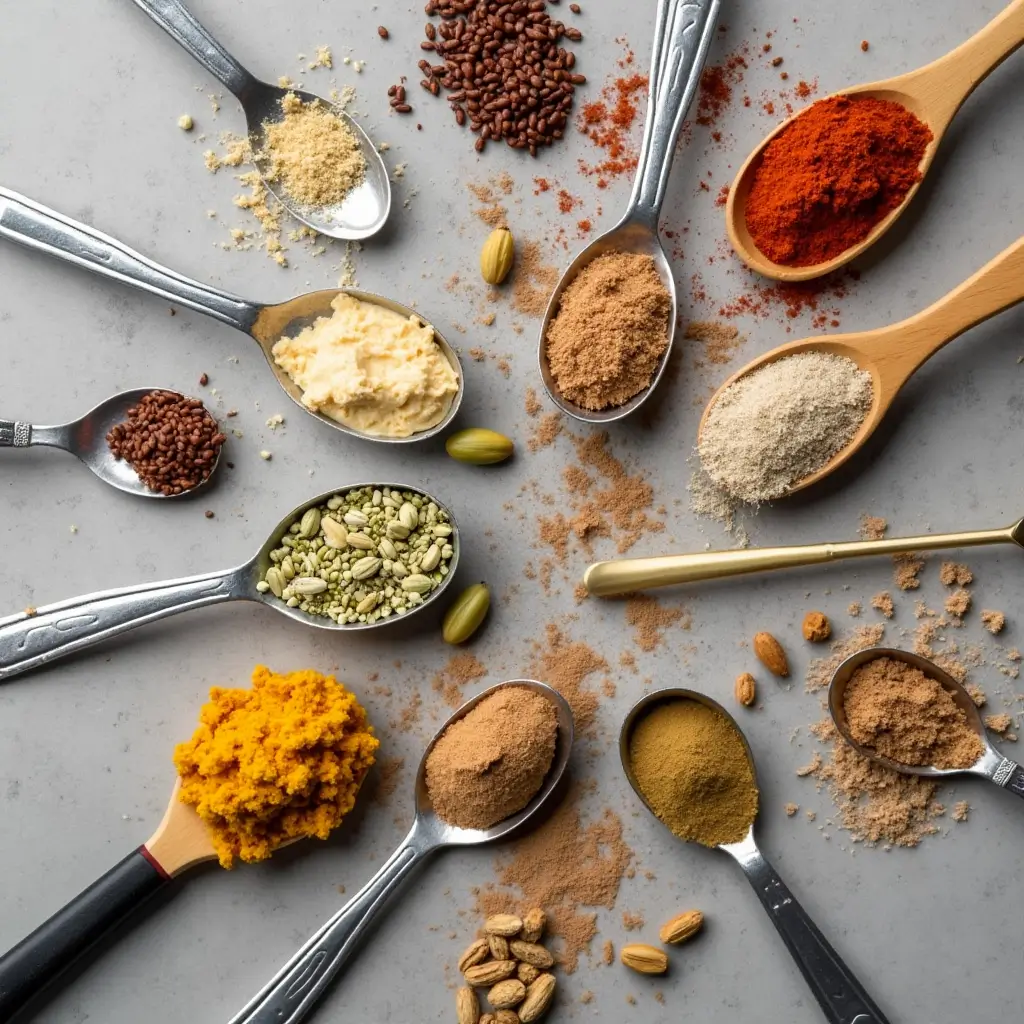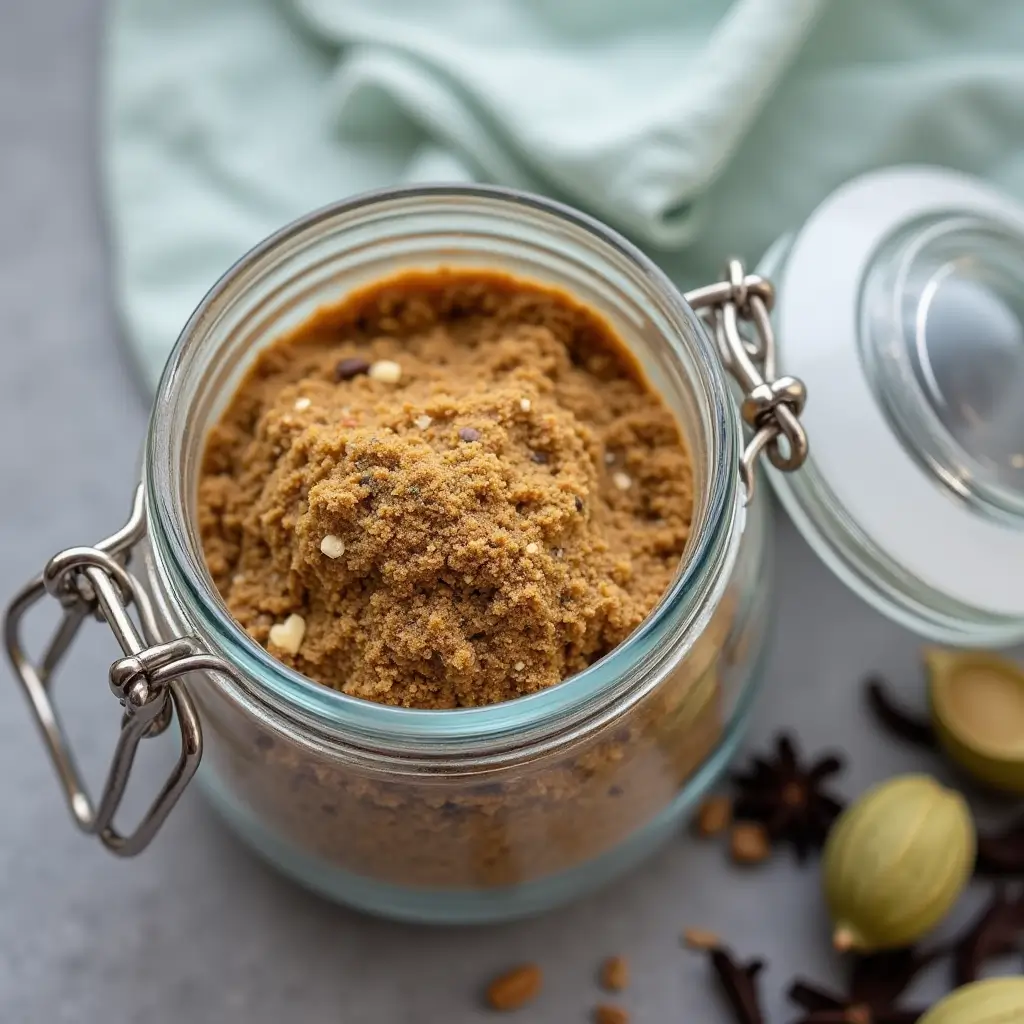Ras El Hanout – Best Guide to Morocco’s Most Complex Spice Blend
Ras El Hanout Embark on a sensory journey to the heart of Moroccan cuisine as we unlock the secrets of Ras El Hanout, a spice blend so complex and nuanced, it’s revered as the “head of the shop” by spice merchants. This isn’t just a recipe; it’s an exploration of history, culture, and flavor, designed to transform your cooking and transport you to the vibrant souks of Marrakech. Whether you’re a seasoned chef or a curious home cook, this guide will equip you with everything you need to understand, create, and master the art of Moroccan spice blend.
This post contains affiliate links. As an Amazon Associate, I earn from qualifying purchases.
Table of Contents
Recipe Details:
- Prep Time: 10 minutes
- Cook Time: 2 minutes (toasting optional)
- Total Time: 12 minutes
- Servings: 12 (1 tbsp per serving)
- Calories: 6 per serving
What is Ras El Hanout?

If you’ve ever wandered through the aromatic alleys of a Moroccan souk, chances are you’ve caught a whiff of Ras El Hanout—a legendary Moroccan spice blend whose name literally means “Head of the Shop”. Pronounced “RAHS el ha-NOOT”, this spice mixture isn’t just a flavor booster; it’s a symbol of culinary pride, history, and complexity.
The Meaning Behind the Name
“Ras El Hanout” means “head of the shop,” and it implies that it’s the best spice blend a merchant has to sell. It’s not a single recipe, but rather a concept—crafted uniquely by each spice dealer to represent their finest selection.
A Glimpse into Its History
This iconic blend originated in North Africa, particularly Morocco, centuries ago. Traders and herbalists would carefully mix the rarest, most potent spices available to them, creating a signature that was often passed down through generations. Today, Ras El Hanout continues to embody the rich fusion of Arab, Berber, and Mediterranean culinary traditions.
Ingredients in Ras El Hanout
There’s no one-size-fits-all recipe for Moroccan spice blend. In fact, Some variants even feature an astonishing 80+ unique spices!
Common Ingredients Include:
- Coriander – citrusy and warm
- Cumin – nutty and earthy
- Cinnamon – sweet and woody
- Turmeric – vibrant and bitter
- Paprika – smoky and sweet
- Black pepper – adds heat
- Cardamom – floral and spicy
- Cloves – intense and aromatic
- Nutmeg – warm and slightly sweet
- Ginger – sharp and zesty
- Allspice – a peppery clove-cinnamon combo
- Dried rosebuds – for subtle floral notes (especially in Fez)
The Role of Each Spice
Each ingredient contributes a unique layer of flavor, from earthy depth to floral highs. The beauty of Ras El Hanout lies in balance—the spices are blended in such a way that no single one overpowers the others.
Trusted Sources:
- Souk El Attarine, Marrakech (in person)
- Online: In our Amazon store we offer the best products.
Regional Variations Across Morocco
Just like Moroccan architecture or textiles, Ras El Hanout varies by region:
| Region | Notable Additions | Flavor Profile |
|---|---|---|
| Fez | Dried rose petals, lavender | Floral, delicate |
| Marrakech | Harissa notes, cayenne, cloves | Bold, spicy |
| Essaouira | Fennel seeds, cumin-heavy | Coastal, fresh, anise-forward |
💬Chef Bouchra El Ouardi from Marrakech explains: “In my family, Ras El Hanout is not just a spice—it’s part of our story. We blend it ourselves every winter, and each batch tastes a little different.”
How to Make Ras El Hanout (Step-by-Step)

Ingredients for a Medium Batch (about ¾ cup)
- 1 tbsp ground coriander
- 1 tbsp cumin
- 1 tbsp sweet paprika
- 2 tsp ground cinnamon
- 2 tsp turmeric
- 1 tsp ground ginger
- 1 tsp black pepper
- 1 tsp cardamom
- 1 tsp nutmeg
- ½ tsp cloves
- ½ tsp allspice
- Pinch of saffron threads (optional)
- Crushed dried rose petals (optional)
Instructions:
- Toast whole spices (if using) in a dry pan for 2–3 minutes until fragrant.
- Grind spices using a spice grinder or mortar and pestle.
- Mix all ground spices thoroughly in a bowl.
- Store in an airtight glass jar, away from heat and light.
Tip: Use high-quality whole spices for a fresher, more robust flavor.
How to Use Ras El Hanout
This Moroccan spice blend is incredibly versatile. Here’s how to use it like a pro:
Perfect Dishes to Elevate:
- Tagines: chicken, lamb, or vegetarian
- Grilled meats: rub on lamb chops or beef skewers
- Vegetables: roast carrots or eggplants with olive oil + Ras El Hanout
- Couscous: adds warmth and aroma
- Soups and stews: builds complex depth
Recommended Recipes:
- Moroccan Chicken Tagine with Olives
- Vegetarian Chickpea Tagine
- Couscous Bowl with Roasted Veggies
Tip: Start with ½ teaspoon per serving, then adjust based on your heat and spice tolerance.
Buying vs. Making
| Making It at Home | Buying It |
|---|---|
✅ Pros:
|
✅ Pros:
|

Storage & Shelf Life
To keep your Moroccan spice blend fragrant and fresh:
- Store in an airtight glass container
- Keep away from heat, sunlight, and moisture
- Use within 6 months for best potency (whole spices last longer—up to 1 year)
If your Ras El Hanout smells flat or dull—it’s time to refresh the blend!
Health Benefits of Moroccan Spice Blend
While not a medical treatment, many ingredients in this blend boast traditional wellness properties:
- Turmeric: anti-inflammatory
- Cinnamon: may support blood sugar control
- Cloves: antibacterial
- Ginger: aids digestion
- Cardamom: supports gut health
Hopkins Medicine – Top Health Benefits of Common Spices
Nutrition Information (Per Serving — 1 tbsp):
| Nutrient | Amount |
|---|---|
| Calories | 6 kcal |
| Total Fat | 0.2 g |
| Saturated Fat | 0 g |
| Carbohydrates | 1.2 g |
| Fiber | 0.6 g |
| Sugars | 0 g |
| Protein | 0.3 g |
| Sodium | 1 mg |
| Iron | 3% DV |
| Magnesium | 2% DV |
Note: Nutrition may vary depending on the specific spices and ratios used.
Troubleshooting Common Issues
My Ras El Hanout tastes too bitter!
Likely due to too much turmeric or burnt spices. Try rebalancing with cinnamon or sweet paprika.
How can I make it spicier?
Add cayenne, harissa, or black pepper. For mild versions, reduce or skip them.
Can I use it in non-Moroccan dishes?
Absolutely! It pairs well with roasted nuts, baked fish, or even popcorn for a savory twist.
Conclusion
Ras El Hanout isn’t just a spice blend—it’s a culinary experience. Rooted in tradition, crafted with care, and versatile in the kitchen, this Moroccan spice blend invites you to explore flavors as rich as Morocco’s culture itself. Whether you’re making your own or buying from a trusted source, belongs in every adventurous kitchen.
Recipe Categorization:
- Course: Spice Blend / Pantry Staple
- Cuisine: Moroccan, North African
- Diet: Vegan, Gluten-Free, Low-Carb, Paleo-Friendly
- Method: Blending, Toasting (optional)
- Skill Level: Easy / Beginner-Friendly
Explore More Recipes Featuring Ras El Hanout
- Authentic Moroccan Tagine
- Roasted Chicken with Root Vegetables
- Salad -Spiced Chickpeas
- Grilled Lamb Kebabs
Disclaimer: This content is intended for informational purposes only and should not be considered a substitute for professional medical advice, diagnosis, or treatment. Always seek the guidance of a qualified healthcare provider with any questions you may have regarding a medical condition.
Tell us about your experiences!
There are no reviews yet. Be the first one to write one.

